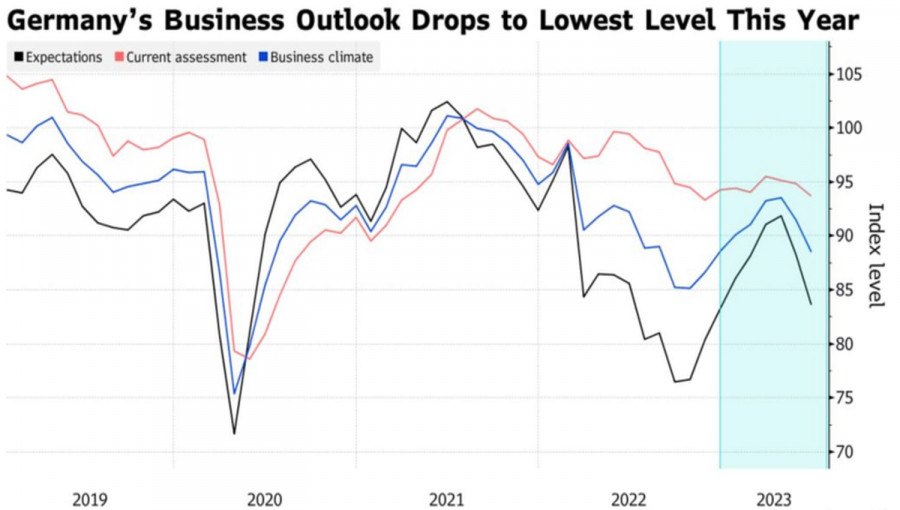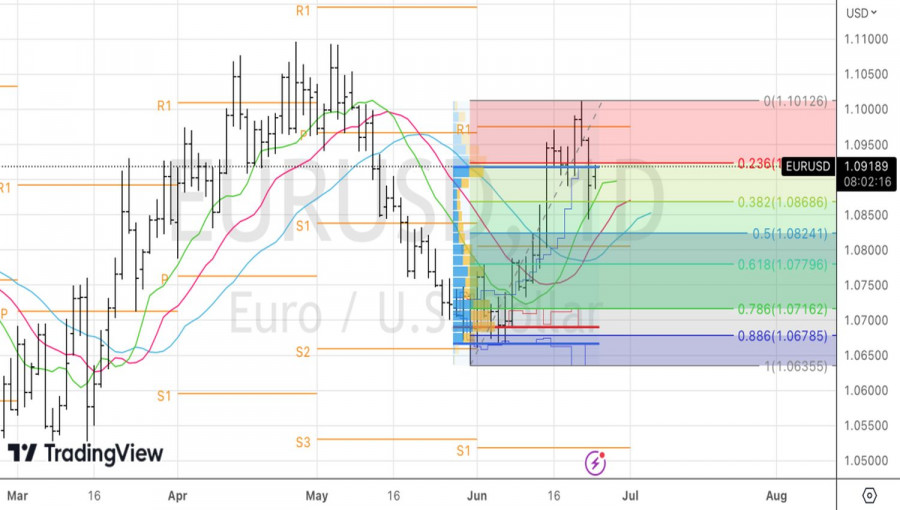
A year has passed since the European Central Bank (ECB) kicked off its monetary tightening cycle. Since then, the deposit rate has jumped by 400 basis points (bps), and it's likely to be hiked by another 25 bps in July. Will there be a pause after that, or will the Governing Council opt to maintain the momentum into September? Time will tell. Meanwhile, the anticipated increase in German and EU inflation enable the EUR/USD bulls to shrug off negative factors in the eurozone.
Analysts at Bloomberg forecast that core inflation in the eurozone will advance to 5.5% YoY in June from 5.3%, following Germany's planned termination of discounted travel tickets. This inflation trajectory empowers ECB hawks to advocate for higher interest rates. Centrists cling to the time lag with which monetary restriction impacts the economy, as well as the fragile state of the EU economy in general. The currency bloc slipped into recession at the very beginning of 2023. Judging by the latest business activity data, the downturn might persist into Q2.
Another negative factor for EUR/USD bulls was the latest German business climate data, which plummeted in June to its lowest levels since the beginning of the year. Business confidence also declined compared to May. The IFO report underscores that the industrial sector slump in developed nations coupled with China's sluggish economic recovery have adversely affected the German economy.
Germany's business climate outlook

The market seemed to overlook Germany's weak statistic data. It is far more concerned about the prospective rise in German and European inflation. On paper, the higher the inflation, the better for EUR/USD. However, the situation is not that simple. The euro is currently supported by expectations, but a major consumer price index release could trigger a sell-off. Moreover, by the end of June, the personal consumption expenditure (PCE) indices - the Fed's preferred inflation gauge - will be released.

Bloomberg experts believe the PCE will jump to 4.6% from 4.4%, with the core indicator remaining unchanged at 4.7%. According to Credit Agricole, if this scenario is realized, it will increase the chances of a 25 bps rate hike at the two upcoming FOMC meetings. This would boost the US dollar. Currently, the CME FedWatch Tool puts the odds of the Fed's monetary tightening at 74%, but there is only a 10% possibility of interest rates rising to 5.75% by year-end. Rising US interest rates are a strong bearish factor for EUR/USD
On the daily chart, the EUR/USD bulls are attempting to counterattack after the confirmation of the Anti-Turtles pattern. Their main task is to propel the pair beyond its fair value gap of 1.067-1.092. If they succeed, long positions could be opened after a breakout of the resistance at 1.0965-1.0975. Otherwise the euro might plunge against the US dollar in a new sell-off.